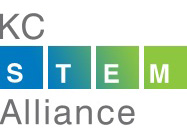14 May Her mind is made up. Riya Naik is going to continue her study of the brain.

“In my Grandmother’s case, the EMT’s didn’t know there was internal bleeding and raced her to the nearest hospital. Once she was diagnosed, she had to be transferred to a larger regional hospital. It was just too late.”
The tenacious Blue Springs High School senior went to work, researching available treatments and the potential risks surrounding TBIs. With the help and guidance of her PLTW Biomedical Innovations teacher, Alicia Leimkuehler, and conversations with the neurosurgeon who cared for her Grandmother, Naik learned how toxic blood was to the neurons. How big a role internal bleeding plays in outcomes.
“For my senior capstone project, I decided to build a prototype that would help diagnose internal bleeding during a TBI and help prevent damage to the neurons. I knew it had to be easy for EMTs to transport and use if it was going to open a window for early detection,” added Naik. “So I built it in a belt.”
Wrapping her head around every possibility, Naik turned to nanotechnology. She quickly shares her down to the nano-wire explanation of the materials used in her prototype—a micro-fluidic chip that senses changes in pressure, pH and surface-tension when a brain bleed is occurring and an image sensor that captures and creates an immediate visual diagnosis.
Naik’s detailed work is impressive to say the least, but she’s not alone. “The way my students approach the biomedical sciences coursework, the questions their asking, the research they tackle, it inspires me,” said Leimkuehler.
“It attracts every type of student. Not just the highest academic achievers. The work is mentally and physically hands-on everyday. Students have come to understand that they can excel in this sequence of courses because they are more engaged.”
Leimkuehler received training to teach the full sequence of courses in the PLTW Biomedical Sciences curriculum. “This is my third class of seniors, and I hear from them when they get to college. Their ready, and their professors acknowledge a difference in their skills and knowledge. They know how to work outside the classroom. I have them for 47 minutes a day. All the extra time invested comes from their total interest in what they’ve decided to investigate.”
At this year’s PLTW Senior Showcase in Union Station, a representative from KU stopped by to see Naik’s prototype. She shared her goal to continue her research when she starts at KU in the fall. “I want to design a tool that would not only diagnose internal bleeding during TBI’s but also during other situations like pregnancy, abdominal injuries, even help prevent permanent damage in patients due to sepsis (blood poisoning).”
That’s what she has in mind. At KC STEM Alliance, we suggest you stay tuned. We plan to follow Riya Naik and her brilliant brain through college. Imagine the possibilities.



